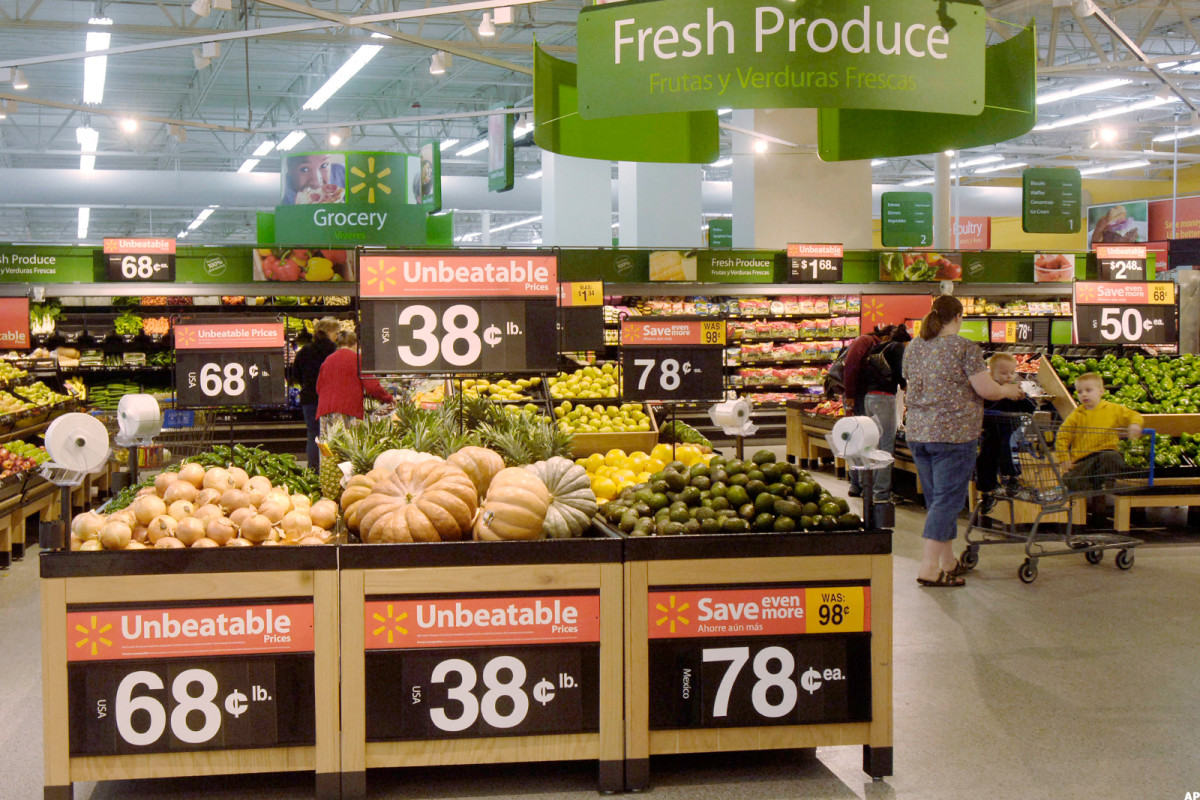
If it feels like every time you visit the grocery store, you part with a little bit more of your emotional well-being each time, you're probably not alone.
Plenty of goods and staples – food included – are more expensive than they were one year ago, or even one month ago.
Related: Walmart’s newest brand is a big hit with wealthy shoppers
The Consumer Price Index shows that, in April, prices increased by 0.3% from March. The CPI ticked up 3.4% on a 12-month basis, about in line with expectations but certainly showing no signs that inflation is coming down anytime soon.
Here's a look at how prices have changed from March to April:
- Food: increase 0.3%
- Energy: increase 1.1%
- Gasoline: increase 2.8%
- Electricity: decrease 0.1%
- New vehicles: decrease 0.4%
- Used vehicles: decrease 1.4%
- Apparel: increase 1.2%
- Medical care commodities: increase 0.4%
- Shelter: increase 0.4%
- Transportation: increase 0.9%
- Medical care: increase 0.4
It should be noted that things change. Like gasoline prices, which peaked in mid-April, according to data from AAA's Daily Fuel Gauge.
AAA's data show that the national average price of gasoline hit a near-term peak at $3.679 a gallon on March 19. At the time, the price was up 18.2% on the year.
It has fallen to $3.591 a gallon, a 2.4% decline from mid-March. It's still up 15.4% for the year. But evidence of that trend should be visible when the next CPI report comes out on June 12.
Food is pricey, but it's complicated
Interestingly, enough, however, food at home was largely unchanged on a monthly basis. This means the cost to buy, make, and prepare meals at home is about stable, and folks are paying more or less what they were in March.

AP
Welcome news, since some foods have seen big price swings over the past year. Here are some of the foods that have gone up the most between January 2023 and January 2024:
- Fresh fruit: up 1.4%
- Cereals and bakery goods: up 1.5%
- Poultry: up 1.7%
- Fats and oils: up 1.9%
- Processed fruits and veggies: up 2.5%
- Nonalcoholic drinks: up 3.4%
- Sugar and sweets: up 4.4%
- Beef and veal: up 7.7%
Not surprising, then, that many folks are opting to eat at home and skip the potentially pricey meals out at restaurants.
"The food away from home index rose 0.3 percent in April, as it did in March," the CPI reports. "The index for limited service meals rose 0.4 percent, and the index for full service meals rose 0.3 percent over the month."
Related: Walmart makes a harsh decision, cracking down on remote work
So while people may opt to keep their dollars closer to home, that money has still got to go somewhere. Food is considered a consumer staple, meaning it's not something we can easily forego. It's a pretty essential part of our budgets.
Walmart sales trends reveal huge problem for fast-food restaurants
As a result, fast-food establishments have also felt that pinch.
“Consumers continue to be even more discriminating with every dollar that they spend as they faced elevated prices in their day-to-day spending which is putting pressure on the QSR [quick service restaurant] industry," McDonald’s (MCD) CEO Chris Kempczinski said on the fast-food giant's April 30 earnings call.
Related: Popular retail chain gets an ominous warning, faces cash crunch
Kempczinski added that "across almost all major markets industry traffic is slowing."
McDonald's menu prices have risen by 100% since 2014, which is more than three times the national rate of inflation.
More Walmart:
- Walmart raises the price of a key service
- Walmart launches cheap brand customers will love
- Some Walmarts make surprising self-checkout change
Starbucks (SBUX) posted similarly disappointing results as a menu of price inflation, posting a 6.49% revenue miss of $8.56 billion. Comparable store sales were down 4%.
But people still have to eat. And Walmart (WMT) says that plays right into its hand.
"As we continue to work closely with our suppliers to lower cost, we're managing our Walmart U.S. pricing, aligned to competitive price gaps, and customers are responding favorably, resulting in sustained sales growth and higher gross margins," Walmart CFO John Rainey said on the Q1 earnings call.
"As a result, we've continued to see strong momentum in private brand sales, with grocery penetration up 30 basis points in Q1," he added.
John Furner, CEO of Walmart U.S., added that the consistent rollbacks Walmart uses to remain price competitive have been edging out other potential meal providers; Furner indicated more folks are opting for Walmart groceries instead of pricier fast food options.
"We see an even larger spread between eating at home, preparing meals at home, and eating out, which we think can help Walmart over the remainder of the year," he said.
So while it may cost upward of $18 for a Big Mac combo meal at some McDonald's, and a Grande cup of plain, black coffee runs you close to $5 at Starbucks, McDonald's is keenly aware that less is more when it comes to pricing right now.
"It’s roughly 4.3 times more expensive to eat out than it is to eat at home,” Walmart CFO John Rainey added in a call with CNBC. “And that’s benefiting our business.”
Related: Veteran fund manager picks favorite stocks for 2024







